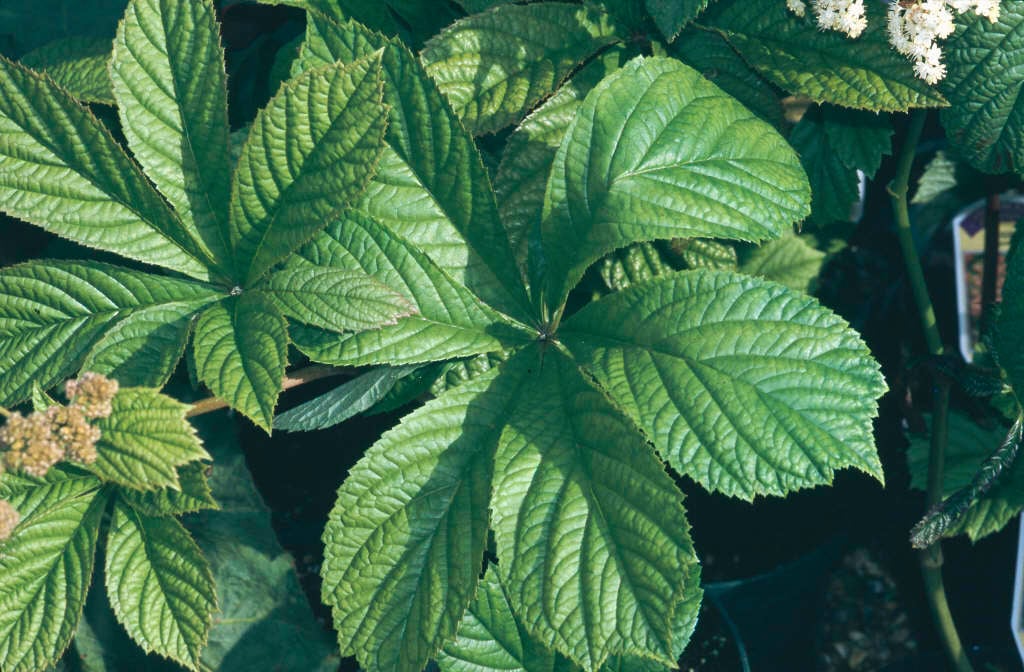Rodgersia aesculifolia
chestnut-leaved rodgersia
A robust herbaceous perennial approximately 1.2m to 2m high, with strongly veined palmately divided leaves with 5-9 obovate leaflets to 25cm in length. Small creamy-white or pink flowers are borne in open panicles to 60cm in length
Size
Ultimate height
1.5–2.5 metresTime to ultimate height
2–5 yearsUltimate spread
1–1.5 metresGrowing conditions
Moisture
Moist but well–drained, Poorly–drainedpH
Acid, Alkaline, NeutralColour & scent
| Stem | Flower | Foliage | Fruit | |
| Spring | Green | |||
|---|---|---|---|---|
| Summer | Pink White | Green | ||
| Autumn | Green | |||
| Winter |
Position
- Full sun
- Partial shade
Aspect
South–facing or West–facing or East–facing or North–facing
Exposure
Sheltered Hardiness
H6Botanical details
- Family
- Saxifragaceae
- Native to GB / Ireland
- No
- Foliage
- Deciduous
- Habit
- Bushy, Clump forming
- Genus
Rodgersia are moisture-loving rhizomatous herbaceous perennials with handsome, often attractively tinted, leaves that may be pinnately or palmately divided, and small star-shaped flowers in large conical panicles in summer, remaining showy in fruit
- Name status
Correct
- Plant range
- N China
How to grow
Cultivation
Grow in deep, humus-rich, fertile reliably moist soils in full sun or partial shade with shelter from cold drying winds
Propagation
Propagate by seed sown in spring or by division in spring
Suggested planting locations and garden types
- Cottage and informal garden
- Flower borders and beds
Pruning
Cut back after flowering
Pests
May be susceptible to slugs
Diseases
Generally disease-free
Get involved
The Royal Horticultural Society is the UK’s leading gardening charity. We aim to enrich everyone’s life through plants, and make the UK a greener and more beautiful place.

